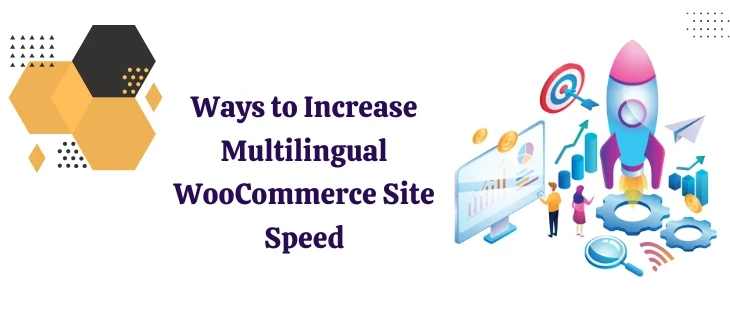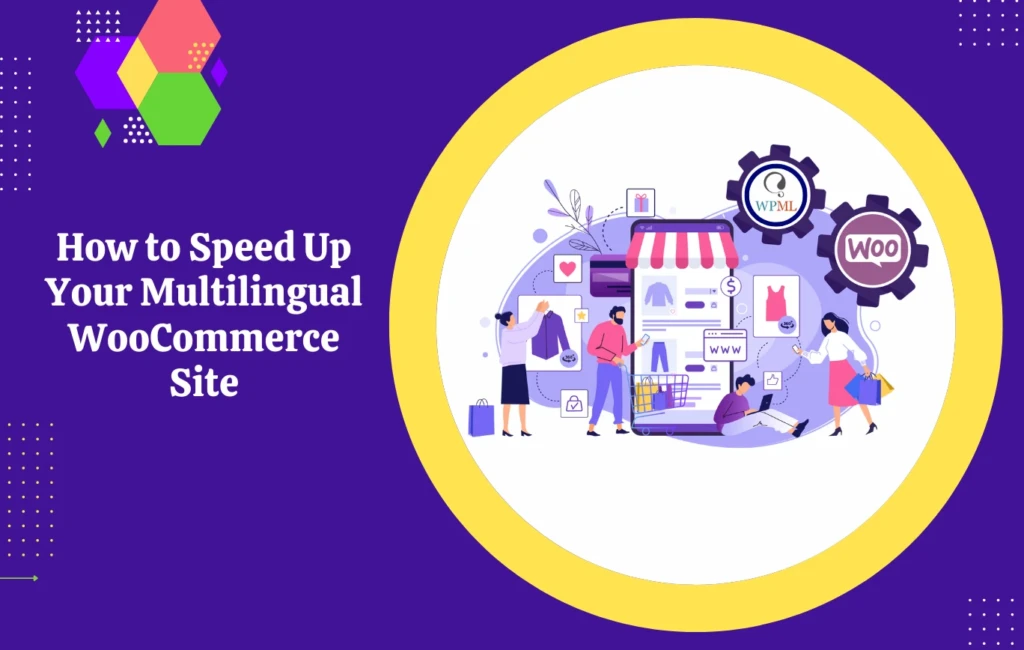A WordPress plugin can help you create a multilingual website. However, offering content in more languages can affect your site’s loading speed. Therefore, WordPress speed optimization is crucial to increase page speed, maintain reliable uptime, and boost conversions. Speed up your Multilingual WooCommerce Site helps your visitors and potential customers gain a smooth experience on every visit. As the optimization specialist, we want to offer you the best industry practices and ways to speed up your multilingual WooCommerce store. Let’s get right to it.
Why You Should Make Your WooCommerce Site Multilingual?
A multilingual website comes with many benefits such as:
1. Reach New Market: having a multilingual website allows you to connect with worldwide customers and reach new markets. If your website will be served in the language your customers want, it will be easier for them to understand what you’re selling.
2. Improve SEO: With the right multilingual SEO techniques, you can reach new markets and rank your website higher where customers can find the content, they need in the language they feel most comfortable with.
3. Deliver Better User Experience: Delivering your site in multiple languages eliminates misunderstandings caused by language barriers. In a highly competitive eCommerce business market, gaining and maintaining the trust and loyalty of your customers is crucial. So, having a multilingual WooCommerce can help you create a better user experience.
Read Also: Best WooCommerce Plugins to Boost your Sales
Why Optimize Your Multilingual WooCommerce Site?
Translating your website using a plugin is one part of having a multilingual website. Making it optimized for performance in terms of speed and responsiveness is also crucial for a successful store. How fast your pages load determines everything from user satisfaction to search rankings.
Here are some key things to consider:-
- Bounce Rate: The longer your website takes to load, the higher will be the bounce rate and the more consumers will abandon your site.
- Site speed affects SEO: The faster the page load, the better the SEO and the higher the visibility on search engines. Google places faster sites higher in the search results.
- User experience: Make a website cached to help you achieve a better user experience by saving your user’s bandwidth because static pages have a small file size.
How to Optimize A WooCommerce Multilingual Store Using Plugin
While all caching plugins promise to make your site faster, not every plugin is fully compatible with multilingual eCommerce sites. A multilingual store needs to ensure the dynamic change of the language and currency at any moment. For most of the plugins out there, it is hard to cache things that are dynamic by design. And, most cache plugins designed for multilingual websites could cause performance issues.
Thus, if you are looking for the right optimization plugin for your WooCommerce store, w3speedster is the one-stop solution to help you optimize speed and performance. It consists of the best quality features from CSS & JS optimization to Image optimization, helping leading WooCommerce brands to achieve 90+ scores on Google Page Speed Insights.
8 Ways to Increase Multilingual WooCommerce Site Speed

1. Choose a Good Hosting
Hosting is the fundamental need of any website. Where you host your site has a huge impact on how fast it loads. So, if the servers of your website are slow, the results of the optimization will be limited. So, the first step you can take towards speeding up your multilingual site is to invest in quality hosting.
You can start out with shared hosting. However, if you’ve achieved a certain level, a virtual private server (VPS) would be perfect for you, which comes with dedicated resources. You can also choose to have managed WordPress hosting. It’s a bit more expensive option but can be well worth the price. If you are looking for the best WordPress Hosting, check out the Top 10 WordPress hosting providers & choose the one that fits you perfectly.
2. Install Quality Resources
Limit yourself to the quality themes and plugins designed with quality code & optimized for performance. However, badly designed resources could come with many issues or even when you have too many of them. Excess plugins and low-quality extensions are the major factors in site performance. So in order to increase your multilingual site speed, it’s best to limit yourself to what’s actually needed.
It is recommended to use a lightweight theme instead of one that comes with “all the functionality”. Make sure to have only those plugins that are most crucial to use and which can provide value to your WordPress. And, eliminate the ones that don’t provide any value.
For the plugins that you do keep around on your site, make sure they are high quality and optimized for performance.
3. Optimize Your Images
Images take into account the majority of the page weight. Thus, optimizing images would help you boost speed on a multilingual WordPress website. The smaller will be your images, the faster they will load. The first step you can take to optimize images is to reduce their size through compression.
This will allow you to get rid of unnecessary data without compromising quality. In photoshop, there is the Save for web option to ensure your image quality stays the same. You can also use online compressors such as TinyPNG/JPG. Another option is using a plugin to automate image compression on upload including w3speedster to help you with image optimization.
In addition, make sure to only use as large an image on your site as necessary.
4. Enable Caching
Caching creates the HTML version of the pages on the server and sends it to the visitors’ browsers. That way, they don’t have to generate it from scratch. This can save valuable time because it reduces the amount of communication with the server (requests, remember?)
You can either use a plugin to implement caching or enable it manually. Whichever option you’ll choose, caching can surely help you optimize your multilingual site speed.
5. Enable Gzip Compression
Gzip compression is another effective method to help with speed optimization. It works the same way as creating a zip file on your computer, just that it happens on your server. Compression creates to smaller files, which are faster to download and thus increase your site speed.
A WordPress plugin can also help you to implement Gzip compression. Alternatively, you can enable compression manually by posting the following code inside .htaccess in your website’s root directory.
6. Speed Up Your Website With A CDN
The content delivery network (CDN) distributes your website to servers worldwide. Then, whenever someone requests to visit your site, they will receive them from the nearest location. Without CDN, it could take more time for the visitors to download site resources and eventually, increase the time your site takes to load your website.
Content delivery networks alleviate this problem by placing static website files in a network of computers across the globe.
7. Decrease Server Requests
Server requests happen anytime the browser asks to download resources from the server. This can be an image, a style sheet, or any other file. The fewer server requests occur, the faster your multilingual website.
There are many ways to reduce server requests. For example, you may limit the elements on the screen by decreasing the number of posts on your blog page. You find this option under settings > reading.
8. Avoid External Resources
The resources retrieved from the server where the website is hosted are known as internal resources. However, if the resources are retrieved elsewhere are called external resources.
The external resources include social media, Google Fonts, Google Analytics, and marketing tools. Avoiding external resources from your WooCommerce Multilingual website will reduce the server load and increase the site speed.
Final Words – Speed Up Your Multilingual WooCommerce Site
Optimizing your store for speed is a way to improve the shopping experience and create fixed customers ready to pay you again. There are many ways to WooCommerce performance optimization, but we have provided the most effective ways for the guaranteed performance boost in no time. A user-friendly and responsive multilingual website is what you need to keep your customers satisfied and coming back for more.
FAQs
WooCommerce is a robust plugin that allows users to run multilingual sites using plugins. It enables users to easily manage their website and products’ translations and serve the visitors in their native language.
You can use WordPress Plugins to support your store with multilingualism. There are many plugins to help you, but it is recommended to use well-designed trusted plugins which include WPML, TranslatePress, Polylang, Weglot, MultilingualPress & more.
Setting up a WooCommerce multilingual website without using plugins involves:
– Set up WordPress Multisite.
– Create separate sites for each language version.
– Configure them for each language and link them together.
– Add content to each site.
 Christmas Mega Sale – Enjoy Up to 50% OFF on Every Plan!
Christmas Mega Sale – Enjoy Up to 50% OFF on Every Plan! 



I needed to thank you for this excellent read!! I definitely enjoyed every little bit of it. I have got you bookmarked to look at new things you post